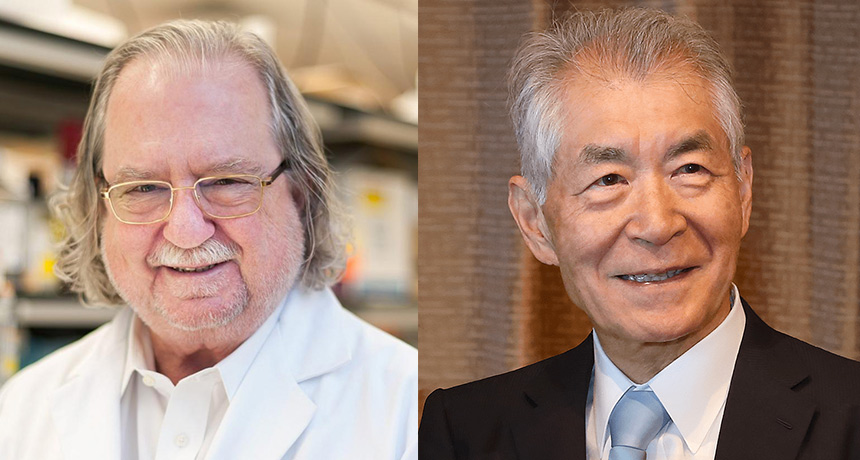How exercise supports anti-cancer immunity
2025-04-09

Physical activity and exercise have a wide range of health benefits, and have been linked to reduced risk of cancer, better responses to cancer treatments, lower cancer recurrence rates, and better rates of survival. There are a number of theories as to how exercise provides such benefits, including direct effects and related factors. These include a lower body-mass index (BMI) or a health-conscious lifestyle, which could improve the body's metabolism (processes of converting food into energy and eliminating harmful waste products), reduce inflammation, and strengthen the immune system. Honing in on the potential effects of physical activity on immune responses to cancer, research has identified numerous possible contributing factors.
Studies investigating how exercise contributes to antitumor effects found that T cells, the “warriors of the immune system”, and specifically a group called CD8+ T cells, are essential to the anti-cancer benefits of exercise. Digging deeper, researchers found that exercise causes a change in metabolism in the muscles, and that this different kind of metabolism releases a number of unique molecules into the bloodstream. As it turns out, these byproducts of exercise, including lactate and other molecules, serve as excellent support molecules for T cells in the blood, which thrive in their presence and develop enhanced functions that help them to fight and kill cancer cells. In other studies, researchers have observed higher levels of T cells in tumors and increased multiplication of T cells in the lymph nodes, which occurs when T cells are gearing up for battle. Further, evidence from patients with cancer has shown that those who exercise during chemotherapy can overcome some of the negative impacts that chemotherapy has on the immune system, particularly on the important CD8+ T cells.
In addition to CD8+ T cells, natural killer, or “NK” cells are also strong fighters in the immune system, and are capable of recognizing and killing cancer cells. In some studies, researchers have reported that exercise was associated with increased NK cells in tumors, including NK cells that were activated or were actively multiplying. Further investigation has suggested that exercise may contribute to NK cell accumulation in tumors by increasing their circulation in the body, allowing more to end up in tumors and come in contact with their targets. This effect may be dependent on the adrenaline rush experienced during exercise, according to one study. In another trial, researchers also found that while exercise did not directly enhance the functions of NK cells, it did increase cancer cell production of molecules that support NK cell functions, allowing NK cells to survive in tumors and fulfill their killer potential.
In addition to directly supporting immune cells that fight cancer, exercise may also work by reducing the suppressive functions that tumors use to limit immune attack. One way that the tumor protects itself from immune cells is by creating a “hypoxic” environment, meaning an environment that is low in oxygen. While the cancer cells can handle this extreme environment, many immune cells can’t, and struggle to survive. Exercise may reduce hypoxia in tumors by increasing blood flow and development of well functioning new blood vessels, allowing oxygen back into tumors, and thus allowing immune cells to enter the tumors and survive long enough to put up a fight. Better circulation may also work to pump cancer treatment drugs and/or more fresh immune cells into tumors, helping to get these cancer-fighting agents where they need to be. Exercise has also been shown to limit tumors from producing molecules that suppress antitumor immune cells (checkpoint molecules), and from recruiting cells that suppress immune cell activity, like monocyte-derived suppressor cells (MDSCs) and regulatory T cells (Tregs), which often support or protect cancer cells. Some studies have even noted exercise-induced changes in these suppressive cells, shifting their behavior from pro-cancer to anti-cancer.
While exercise in general has been consistently linked to immune benefits and anti-cancer effects, research is still limited in many ways. For one, different studies vary in the types, amount, and duration of exercise studied, and in whether exercise was performed before, during, or after cancer treatment. This makes it challenging for doctors to make specific recommendations regarding the intensity, duration, and frequency of physical activity as part of a plan to support cancer treatment. Further, patients, especially older patients, may face physical and psychological barriers in the implementation of physical activity, with surveys showing that they would do best with clear, specific fitness plans tailored to their abilities. While there is still a ways to go in formalizing the details of physical activity as part of a treatment plan for patients with cancer, the benefits of exercise are evident, and appear to be most prominent when exercise, even small actions like taking the stairs or going for walks, is a consistent part of everyday life, ideally starting prior to treatment. While studies have yet to directly link exercise to outcomes of immunotherapy in patients, research in mice suggests that it may well play a beneficial role.
By Lauren Hitchings
References:
CANcer BEhavioural nutrition and exercise feasibility trial (CanBenefit); phase I qualitative interview findings. Swan F, Chen H, Forbes CC, Johnson MJ, Lind M. J Geriatr Oncol. 2021 May;12(4):641-648. doi: 10.1016/j.jgo.2020.09.026. Epub 2020 Oct 12. PMID: 33059998.
Cytotoxic T-cells mediate exercise-induced reductions in tumor growth. Rundqvist H, Veliça P, Barbieri L, Gameiro PA, Bargiela D, Gojkovic M, Mijwel S, Reitzner SM, Wulliman D, Ahlstedt E, Ule J, Östman A, Johnson RS. Elife. 2020 Oct 23;9:e59996. doi: 10.7554/eLife.59996. PMID: 33095157; PMCID: PMC7584454.
Exercise Benefits Meet Cancer Immunosurveillance: Implications for Immunotherapy. Fiuza-Luces C, Valenzuela PL, Castillo-García A, Lucia A. Trends Cancer. 2021 Feb;7(2):91-93. doi: 10.1016/j.trecan.2020.12.003. Epub 2021 Jan 6. PMID: 33358110.
Physical Activity and Breast Cancer Prevention: Possible Role of Immune Mediators. Xu Y, Rogers CJ. Front Nutr. 2020 Oct 8;7:557997. doi: 10.3389/fnut.2020.557997. PMID: 33134306; PMCID: PMC7578403.
Predictive lifestyle markers for efficacy of cancer immune checkpoint inhibitors: a commentary. Sillah A, Tykodi SS, Hall ET, Thompson JA, Watson NF, Lee SM, Bhatia S, Veatch J, Warner J, Peters U, Malen RC, Silverman A, Phipps AI. Future Oncol. 2021 Feb;17(4):363-369. doi: 10.2217/fon-2020-0730. Epub 2021 Jan 5. PMID: 33397134.
Tumor Cell-Intrinsic Immunometabolism and Precision Nutrition in Cancer Immunotherapy. Cuyàs E, Verdura S, Martin-Castillo B, Alarcón T, Lupu R, Bosch-Barrera J, Menendez JA. Cancers (Basel). 2020 Jul 2;12(7):1757. doi: 10.3390/cancers12071757. PMID: 32630618; PMCID: PMC7409312.




